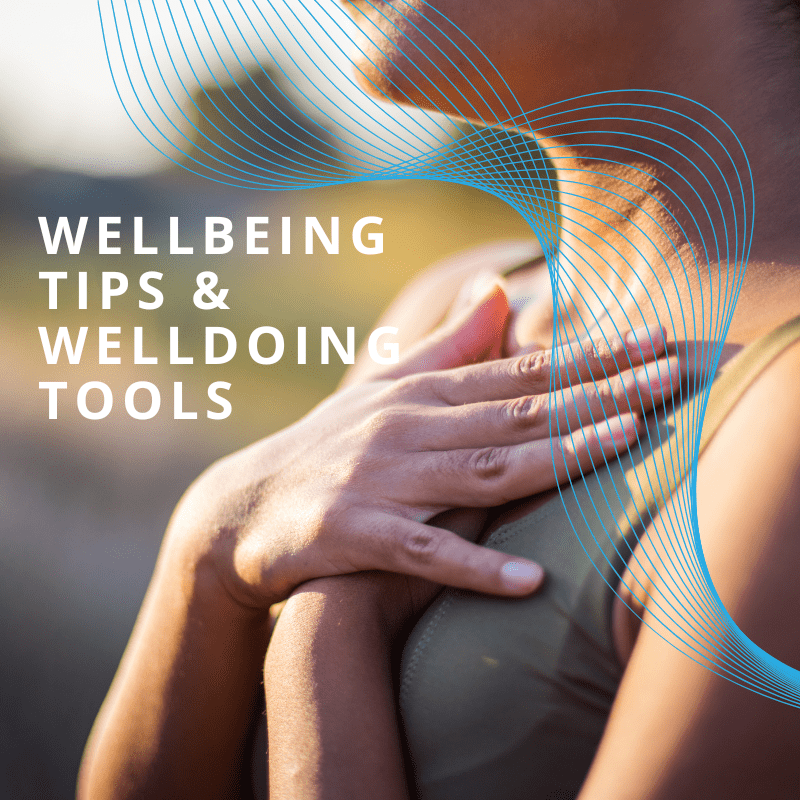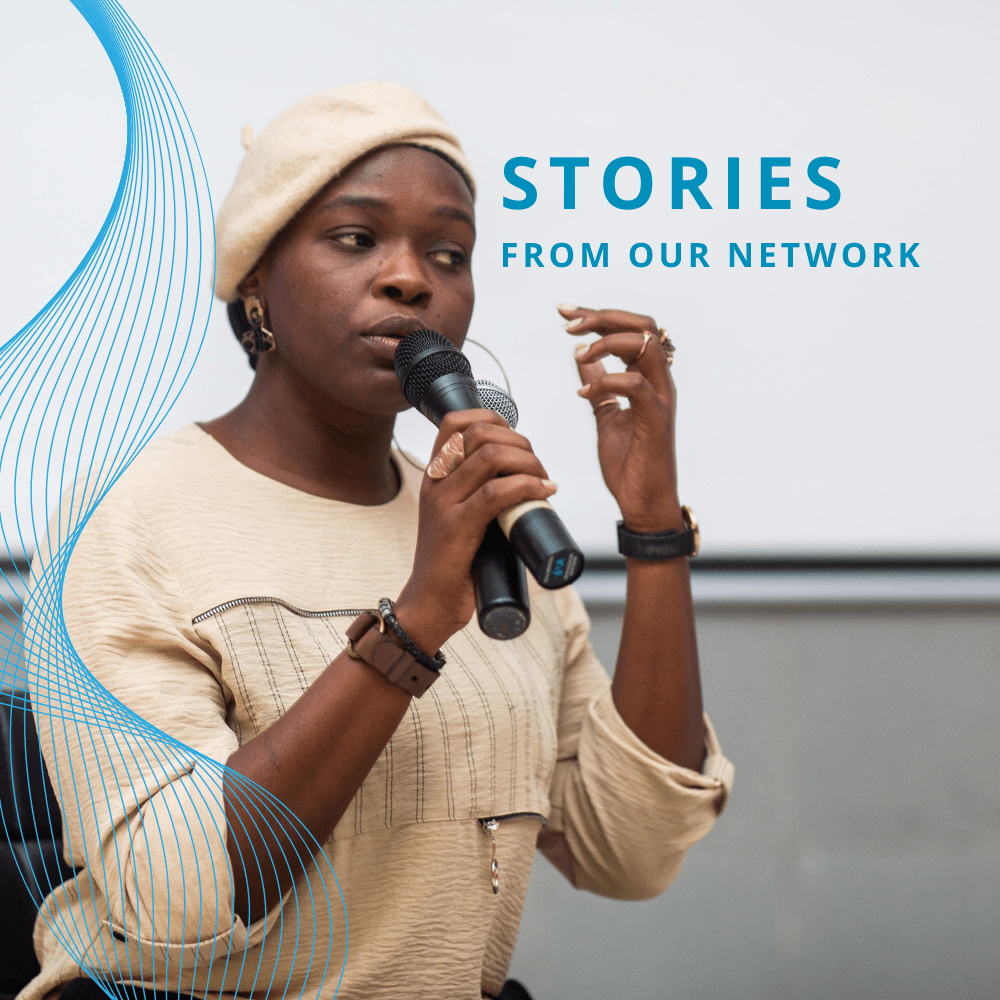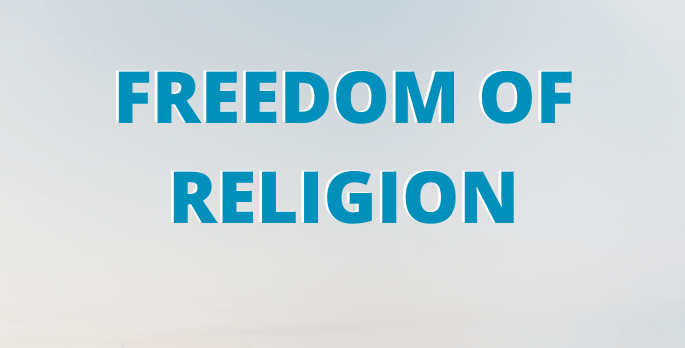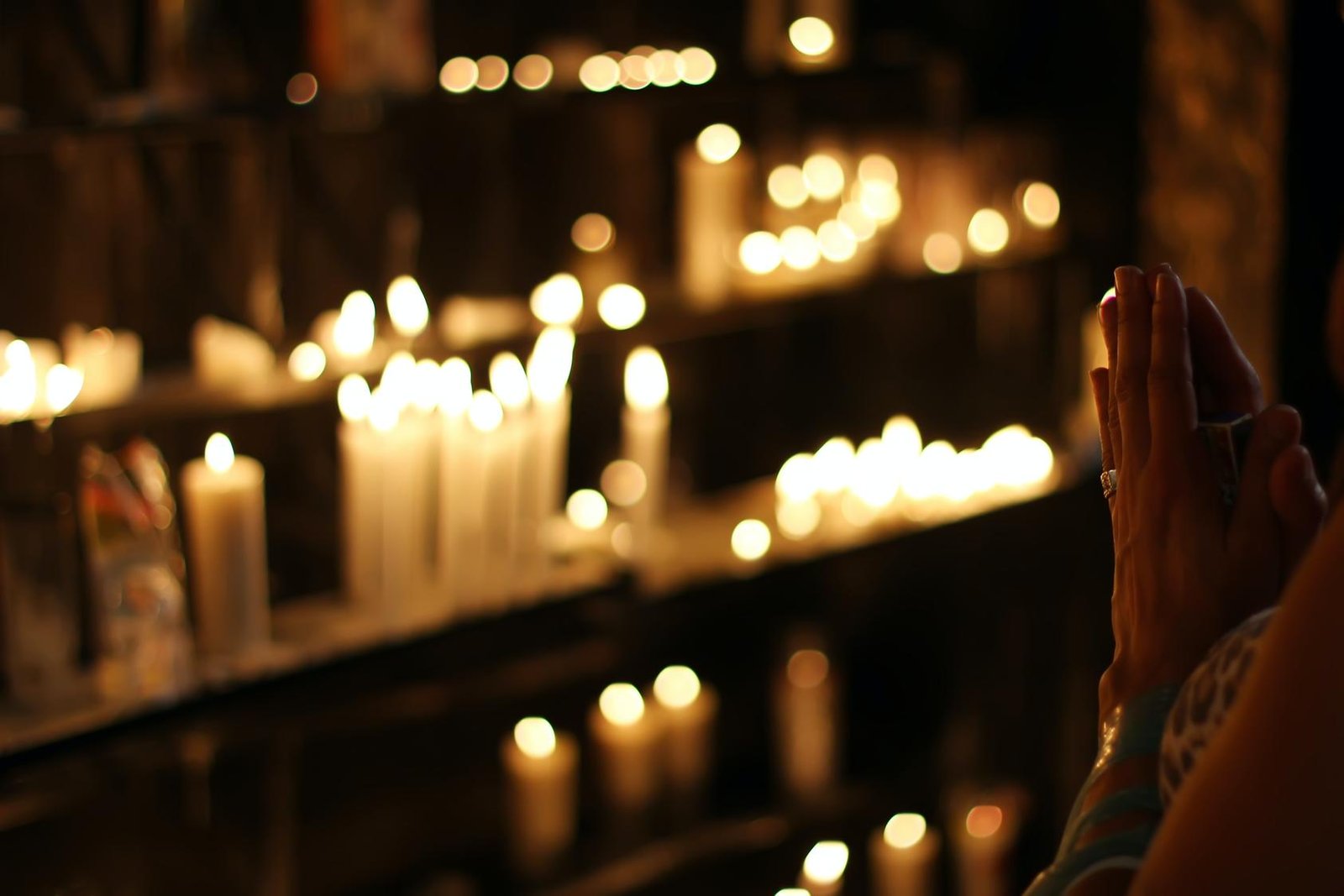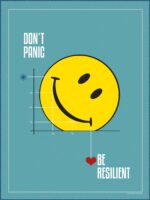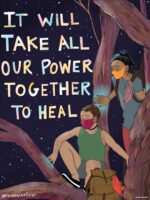
Welldoing Tips Welldoing Tips
Creating Inner Wellbeing
Our Ultimate Guide of Practices to Try Today
Co-created by The Wellbeing Network

What do you do for your inner wellbeing?
Here at The Wellbeing Project, we don’t define “inner wellbeing” – it’s something that means different things to each of us! We do share, however, practices and rituals that help us all along our individual wellbeing journeys.
We asked members of The Wellbeing Network – our global coalition of individuals and organisations championing the wellbeing for social change movement – to share their favourite practices that help them create a sense of inner wellbeing.
Take a deep dive into this growing list to find your next wellbeing practice.
This list is growing – help us add to it! Do you have a wellbeing practice to share? Did you try something on this list and love it?
31 Practices for Creating Inner Wellbeing 31 Practices for Creating Inner Wellbeing
1. Spend a few moments with your breath
By simply tuning into your breath, you can bring yourself into the present moment, ease stress, and create a sense of calmness. It’s a small act with big rewards, boosting your mood, energy, and overall mental clarity. Next time you need a little pick-me-up, just take a deep breath and feel the difference. Get started with our 5-minute guided meditations.
2. Express gratitude
When you pause to acknowledge the things you’re grateful for, whether big or small, you’re shifting your focus to the positive aspects of your life. This simple act can instantly uplift your spirits, cultivate a sense of contentment, and even improve your relationships. So, why not take a moment right now to think of something you’re thankful for? You’ll be amazed at how it brightens your day.
3. Move your body
Whether it’s a quick stretch, a brisk walk, or a dance around the room, getting your body moving can instantly uplift your mood and energy levels. Physical activity releases endorphins, those feel-good hormones that can help alleviate stress and boost your sense of happiness. Plus, moving your body improves circulation, reduces muscle tension, and increases your overall vitality. Need more pros? This podcast episode on a “Playful Approach to Fitness” hosted by Jameela Jamil lists them all.
4. Ha-ha-have a good laugh
Laughter has this magical way of brightening our days and lifting our spirits. When we laugh, it’s like a warm embrace, filling us with joy, connection, and a sense of pure delight. Whether it’s a hearty belly laugh with friends or a giggle shared with loved ones, laughter reminds us to savour the simple pleasures of life and find beauty in every moment.
5. Explore your creativity
Itching to use your hands? Have you always wanted to learn a new artistic skill? Find a space to practice your creativity, such as an art class or a DIY project at home. Not only does exercising your creativity feel fulfilling and spark joy, but using your hands is a proven way to increase feelings of satisfaction.
6. Journaling
Journaling can significantly enhance wellbeing by providing a structured outlet for processing emotions, reducing stress, and gaining clarity on thoughts and experiences. Through journaling, we can track patterns, set goals, and reflect on personal growth, leading to increased self-awareness and resilience. Don’t know where to start? This podcast episode hosted by Dr. Rangan Chatterjee may provide some guidance.
7. Enjoy playtime
Play isn’t just for kids! Adults need to have fun too. Spending time playing – having fun for fun’s sake – can be an antidote to stress, increase feelings of joy, promote imagination and creativity, and build bonds and empathy with others.
8. Learn a new skill
Have you always wanted to know how to cook? Speak a language? Build something? Learning new skills is a great way to introduce novelty into your life, build self-confidence, and meet new people. Watch how-to videos on platforms like YouTube, Udemy, and LinkedIn or ask someone in your community to teach you something new.
9. Spend some time in the sun
Humans are just like plants: we need sunlight to grow and thrive too! Making sure you get a daily dose of Vitamin D (or bright light if the weather is darker) can be one way to boost serotonin levels, strengthen your immune system, and support your wellbeing.
10. Enjoy Ma (間)
Ma is a Japanese philosophical concept of the space between a beginning and an end. In enjoying Ma, we take time to pause, be mindful, and reflect on what has begun and what has ended. The result is an intentional, slow moment that can help quiet the mind.
11. Say “hello”
Research in the U.S. showed that adults who said “hello” to their neighbours self-reported higher rates of wellbeing than those who didn’t. Who in your community can you start saying “hello” to?
12. Stop to smell the roses
By slowing down, being mindful, and keeping an eye on the little things in life, we can invite a certain quietude, peace, and happiness into our hearts. Taking time to notice and be delighted by shōkakkō – a Japanese term for little joys in life – can be a beautiful practice for mindfulness, gratitude, and happiness.
13. Try meditation
Meditating is a practice of mental calm and focus. There are many ways you can meditate. You can start a practice entirely on your own, or you can even download guided meditations from our Meditation Hub or any of your favourite apps.
14. Visit an art museum
While creating art can be incredibly therapeutic, so can simply observing and contemplating it. Alain de Botton and John Armstrong’s book, “Art as Therapy”, explores how viewing art from a new point of view can help us with our wellbeing. The book offers several techniques for using art as therapy, but you can also venture out on your own to see how spending time in museums and galleries makes you feel. Here are some tips from the Guggenheim Museum in Bilbao, Spain.
15. Dance in a group
Dancing with others is an integral part of many cultures. Whether by partaking in a traditional dance or just spontaneously busting a move, dancing is a great way to move the body and connect with others. Look for dance classes in your community, collective dance experiences like flash mobs, attend a concert, or participate in dancing rituals in your community.
16. Drink some extra water
We need to stay hydrated to stay focused and energized during the day. Have trouble drinking enough water throughout the day? Try setting a timer or setting out your cups of water in the morning to remind yourself to drink up.
17. Stretch it out
When you take the time to stretch, you’re not only releasing tension and tightness in your muscles but also increasing blood flow and flexibility. Plus, stretching can help improve your posture and prevent injuries, allowing you to move through your day with greater ease and comfort.
18. Speak to a therapist
Talk therapy offers a compassionate and supportive space to openly explore our thoughts and feelings, leading to improved self-awareness, healthier coping strategies, and increased resilience. Research consistently shows the effectiveness of therapy in reducing psychological symptoms and enhancing overall wellbeing, highlighting its importance in emotional healing and growth.
19. Spend time with a furry friend
Study after study confirms what humans have felt and known since the dawn of time: animals have this incredible power to heal and uplift us, making our hearts lighter and our spirits brighter. Just being around them can wrap us in feelings of comfort, companionship, and pure, unconditional love, making us feel truly connected and supported. Even if you don’t have an animal at home, you can visit a friend’s pet, watch animals in a park, or volunteer at an animal shelter.
20. Take some time off
Ah, taking some time off! An invitation to step away from the hustle and bustle of everyday life and immerse yourself in moments of discovery. Whether you’re exploring far-off lands, reconnecting with loved ones, or simply indulging in some well-deserved rest, a sabbatical or holiday is a precious gift to yourself. On top of being a chance to refuel your spirit, recharge your energy, and return to life feeling refreshed, inspired, and ready, it’s also believed to extend your life expectancy!
21. Eat well
Eating well is like a love letter to your body and soul. Every bite is an opportunity to show yourself kindness and care, to honour the incredible vessel that carries you through life’s journey. Whether it’s savouring a colourful salad bursting with fresh veggies or indulging in a decadent piece of dark chocolate, eating well is a celebration of the abundance and goodness that surrounds us.
22. Cultivate your friendships
Whether it’s catching up over a cup of coffee, or simply being there for one another in times of need, cultivating friendships enriches our lives in countless ways and even extends our lifespan! It’s about creating a network of love and support that sustains us through life’s ups and downs, reminding us that we are never alone.
23. Let it go
A study conducted by the University of Frankfurt found that singing releases oxytocin, a hormone linked to bonding and social connection, which can elevate mood and reduce feelings of loneliness. Singing offers not only a source of artistic expression but also a powerful tool for enhancing mental, emotional, and physical health. Meaningful songs, like those used in special rituals or just your favourite tunes, can help bring you closer to yourself and others.
24. Saddle up
Spending time with horses, either informally or through Equine-Assisted Therapy (EAT), can be incredibly therapeutic. As sacred animals in some cultural traditions, like the First Nations communities in North America, spending time with horses can invoke the historic, spiritual connection between humans and this majestic animal.
25. Tune in
Music can have a healing, therapeutic, and mood-boosting effect on your mental health and wellbeing. When you listen to music that you enjoy or are familiar with, your brain produces the happy hormone (dopamine) and lowers the stress hormone (cortisol). Listening to your favorite music can not only make you feel more joyful but it also can relieve stress and anxiety. Turn it up!
26. Enjoy a light (or strong) touch
Massage therapy is one way to cope with stress and improve your physical and mental wellbeing. When one gets a massage, their body releases serotonin, which eases feelings of depression and sadness, and lower cortisol, a stress-related hormone. One could consider a massage like “an hour-long hug” where physical touch and contact give space for both physical and mental relaxation and rest.
27. Head to the great outdoors
Exercising outside can improve mood, self-esteem, and physical health. Research has shown that there are psychological benefits of physical activity in natural environments. Being outside within nature can offer a restorative environment for when we feel a sense of mental fatigue. Find rejuvenation in Ecological Belonging.
28. Dancing
Dancing is a form of exercise that engages multiple body systems at the same time – the heart, lungs, muscles, and brain. Your brain also releases endorphins when you exercise which can have a mood-boosting effect. Don’t have time to attend a dance class? Can’t find a group to dance with? Get moving on your own by just turning on your favourite music and busting a move at home.
29. Art therapy
Art therapy is a healing process centred on art-making and psychotherapeutic creativity. It can help reduce distress and build emotional resilience. Whether conducted individually or within a community, art therapy can provide a space for meaning-making, which can contribute to an overall improved sense of wellbeing.
30. Slip into full-body bliss with yoga nidra
Yoga nidra, or yogic sleep, is a powerful meditation technique for relaxing and rejuvenating the body. Each short session, taken lying down in the savasana pose, gently guides you through a deep dive through the different layers of the self. You can emerge feeling rested, restored, and ready to go: some say a 45-minute session can lend the physical effect of having slept for 3 hours!

